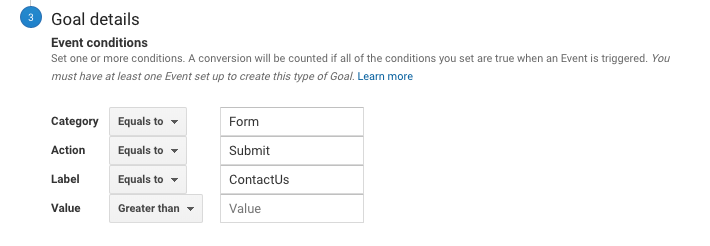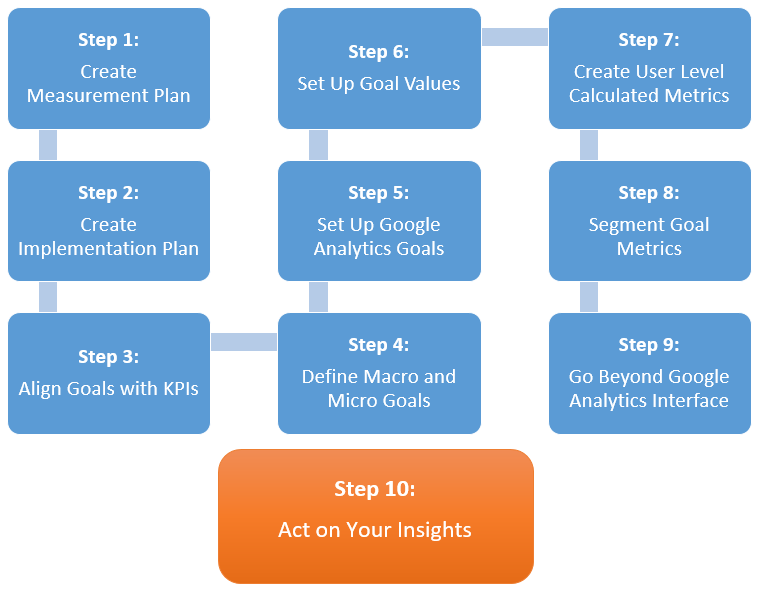Debunking Google Analytics Limitations: Reveal What Information Goals Can not Track
In the world of digital analytics, Google Analytics stands as a powerful tool that provides valuable understandings into internet site efficiency and customer habits. Nevertheless, amidst its abilities, there exist limitations that frequently go unnoticed. Comprehending what Google Analytics can not track is important for an extensive grasp of data analysis and decision-making processes. From the details of user communication with dynamic content to the intricacies of cross-device customer trips, these constraints clarified areas that might stay obscured from traditional analytics viewpoints. By deciphering these constraints, a more clear image arises, enabling even more informed methods and refined understandings into customer engagement and conversions.

Individual Communication With Dynamic Content
Individual interaction with vibrant content plays a critical role in comprehending customer behavior on web sites and maximizing the overall individual experience. Dynamic material refers to aspects on a web page that can transform without the need for a full page reload. This consists of interactive components such as pop-ups, sliders, kinds, and videos that react to customer actions in real-time. By tracking customer interactions with vibrant content, site owners can gain useful insights into user interaction, preferences, and habits.
Google Analytics uses various tools to track customer interactions with vibrant material, such as occasion tracking and virtual pageviews. Occasion tracking enables you to keep track of certain customer actions, like clicking a button or seeing a video clip, supplying data on how users communicate with vibrant elements.
Cross-Device User Journeys
How can contemporary analytics tools track the complicated courses users take across numerous gadgets in their online journeys? Cross-device customer journeys provide a substantial difficulty for monitoring and examining user behavior properly. As customers connect with applications or sites using different gadgets such as smartphones, desktops, and tablet computers, it comes to be vital to recognize just how they move between these platforms to enhance customer experience properly.
Google Analytics deals with restrictions in tracking cross-device customer trips due to privacy concerns and technological restraints - what data is google analytics goals unable to track. While it can give understandings right into private gadgets' interactions, tracking a smooth user journey throughout numerous gadgets stays a difficulty. This restriction can lead to incomplete information and fragmented customer understandings, making it hard for organizations to produce a unified view of the customer trip
To address this concern, companies can utilize advanced analytics devices that use cross-device monitoring capabilities, permitting them to obtain a much more holistic understanding of individual habits. By leveraging these tools, services can connect the gap in tracking cross-device individual journeys and maximize their digital strategies for a smooth user experience.
Offline Conversions and Attribution
As businesses browse the challenges of tracking cross-device customer journeys, an additional crucial element to consider is the world of offline conversions and attribution in the world of information analytics. While Google Analytics supplies important understandings into on the internet user actions, it drops short when it pertains to tracking conversions that occur offline. This constraint positions a significant challenge for services that have both online and offline sales channels.
Offline conversions, such as purchases made in physical shops or with telephone call facilities, are important to recognizing the total consumer journey. Without the ability to associate these offline conversions to details online interactions, organizations may struggle to accurately determine the influence of their electronic advertising and marketing efforts.
To address this space, businesses can check out alternative options such as incorporating CRM systems with online analytics tools or using one-of-a-kind promotion codes that can be mapped back to on-line projects. By bridging the gap between online and offline information, organizations can gain a much more thorough understanding of their customers' habits and boost their total marketing techniques.
Individual Individual Recognition
In the redirected here world of information analytics, the capacity to accurately recognize individual users across different on-line touchpoints is an important obstacle for services seeking to individualize and maximize their advertising and marketing approaches. While Google Analytics supplies useful understandings right into individual behavior and communications, it drops short in allowing the identification of specific individuals as a result of personal privacy problems and technological restrictions. Google Analytics utilizes distinct identifiers such as cookies to track individual sessions and habits, but these do not relate to recognizing private users in an individual sense.

Information From Secure Pages
Despite the raising occurrence of secure web pages on web sites, obtaining information from these encrypted sources provides a special challenge for electronic analytics platforms like Google Analytics. Safeguard web pages, indicated by HTTPS in the link, encrypt information traded in between the user's internet browser and the internet site's server to make certain privacy and safety. While this encryption is important for securing sensitive information, it likewise postures limitations for tracking individual behavior and event analytics information.
Google Analytics encounters obstacles in gathering in-depth information from safe web pages due to the encryption procedures in area. Because of this, specific information factors such as reference sources, keyword searches, and even some customer communications may not be totally caught when users access a website via a secure connection. This restriction look at these guys can influence the precision and completeness of the data evaluation, bring about gaps in understanding customer actions and choices on safe and secure web pages.
To browse this challenge, digital analysts may need to explore alternative tracking approaches or utilize other tools specifically designed to collect understandings from secure web pages. By adjusting approaches to suit these constraints, businesses can still obtain Discover More Here important analytics despite the constraints offered by encrypted links.
Verdict
In verdict, Google Analytics has constraints in tracking individual interaction with dynamic content, cross-device user trips, offline conversions, specific user identification, and information from safe and secure web pages. These constraints impede a detailed understanding of individual behavior and might bring about gaps in data analysis. Regardless of its useful understandings, Google Analytics might not give a total photo of user involvement across numerous touchpoints. It is vital for businesses to be mindful of these restrictions and consider supplementary devices for a more holistic sight of their information.
Customer communication with dynamic material plays an important role in recognizing user habits on websites and enhancing the general customer experience. By tracking customer interactions with vibrant content, internet site proprietors can acquire useful insights into individual engagement, preferences, and actions.
Google Analytics makes use of special identifiers such as cookies to track customer sessions and behavior, but these do not correspond to identifying individual customers in an individual feeling.
As a result, specific data factors such as recommendation resources, keyword searches, and also some customer interactions may not be fully caught when customers access a site with a safe and secure link.In verdict, Google Analytics has restrictions in tracking customer interaction with dynamic content, cross-device user journeys, offline conversions, individual user identification, and information from secure pages.